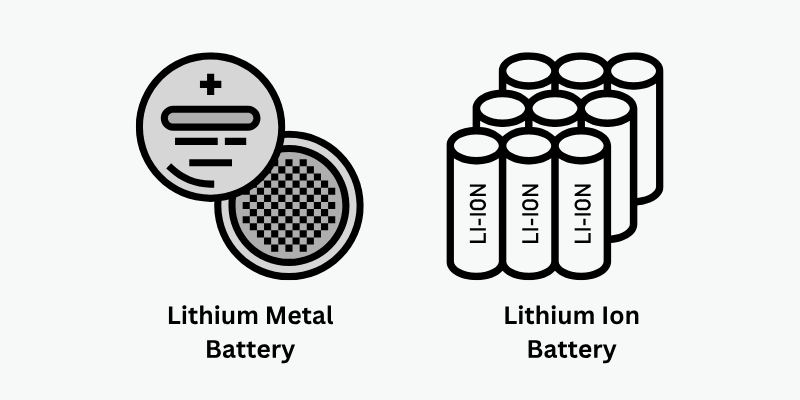ในโลกแห่งการจัดเก็บพลังงาน แบตเตอรี่ที่ใช้ลิเธียม เป็นสิ่งจำเป็นสำหรับการจ่ายพลังงานทุกอย่างตั้งแต่อุปกรณ์ไปจนถึงรถยนต์ไฟฟ้า มีสองประเภทหลัก: แบตเตอรี่ลิเธียม-โลหะและลิเธียมไอออน แม้ว่าทั้งสองจะใช้ลิเธียม แต่ก็แตกต่างกันอย่างมีนัยสำคัญในการก่อสร้างประสิทธิภาพการใช้งานและความปลอดภัย มาสำรวจสิ่งที่ทำให้พวกเขาแตกต่างกัน!
แบตเตอรี่ลิเธียมโลหะคืออะไร?
แบตเตอรี่ลิเธียมโลหะใช้ลิเธียมโลหะสำหรับขั้วบวกทำให้สามารถบรรจุพลังงานจำนวนมากลงในพื้นที่ขนาดเล็ก เมื่อถูกเรียกเก็บเงินลิเธียมไอออนจะย้ายไปที่ ขั้วบวก และรูปแบบลิเธียมโลหะ เมื่อมีการใช้งานแบตเตอรี่ไอออนเหล่านี้จะกลับไปที่แคโทดปล่อยพลังงานในกระบวนการ
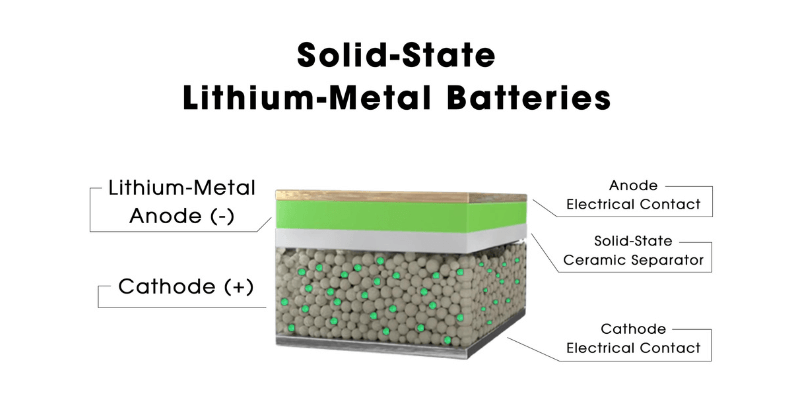
ข้อดีของแบตเตอรี่ลิเธียมโลหะ
แบตเตอรี่ลิเธียม-โลหะให้ข้อได้เปรียบที่สำคัญด้านล่าง:
- ความหนาแน่นของพลังงานที่สูงขึ้น: แบตเตอรี่ลิเธียม-โลหะสามารถเก็บพลังงานได้มากขึ้นในพื้นที่น้อยลงอาจส่งผลให้อุปกรณ์ที่ติดทนนานและช่วงที่มากขึ้นสำหรับยานพาหนะไฟฟ้า
- น้ำหนักเบา: การออกแบบที่มีน้ำหนักเบาทำให้เหมาะสำหรับการใช้งานแบบพกพาเช่นสมาร์ทโฟนแล็ปท็อปและยานพาหนะไฟฟ้าลดน้ำหนักอุปกรณ์โดยรวม
- การชาร์จที่เร็วขึ้น: แบตเตอรี่ลิเธียมโลหะช่วยให้การชาร์จเร็วขึ้นเติมพลังงานแบตเตอรี่ในเวลาน้อยลง
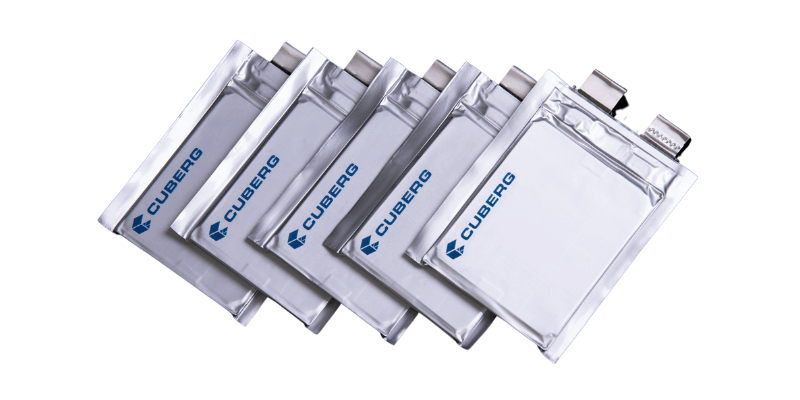
ข้อ จำกัด ของแบตเตอรี่ลิเธียมโลหะ
แบตเตอรี่ลิเธียมโลหะก็มาพร้อมกับข้อ จำกัด ที่สำคัญที่ต้องได้รับการแก้ไข:
- ความกังวลด้านความปลอดภัย: dendrites สามารถก่อตัวจากขั้วบวกโลหะลิเธียมเจาะตัวแยกและทำให้เกิดการลัดวงจรความร้อนสูงเกินไปหรือไฟ
- Limited Cycle Life: แบตเตอรี่ลิเธียมโลหะมีระยะสั้นกว่า วงจรชีวิต กว่าแบตเตอรี่ลิเธียมไอออนเนื่องจากการก่อตัวของ dendrite ที่สร้างความเสียหายต่อความจุเมื่อเวลาผ่านไป
- ความท้าทายในการผลิต: การผลิตแบตเตอรี่ลิเธียม-โลหะมีความซับซ้อนและมีราคาแพงกว่าการผลิตลิเธียมไอออนเนื่องจากปฏิกิริยาของลิเธียมที่ต้องใช้การจัดการเฉพาะทาง
- ความไวต่อสิ่งแวดล้อม: แบตเตอรี่เหล่านี้มีความไวต่อการเปลี่ยนแปลงของอุณหภูมิและต้องการการควบคุมสภาพการทำงานที่แม่นยำเพื่อประสิทธิภาพและความปลอดภัยที่ดีที่สุด
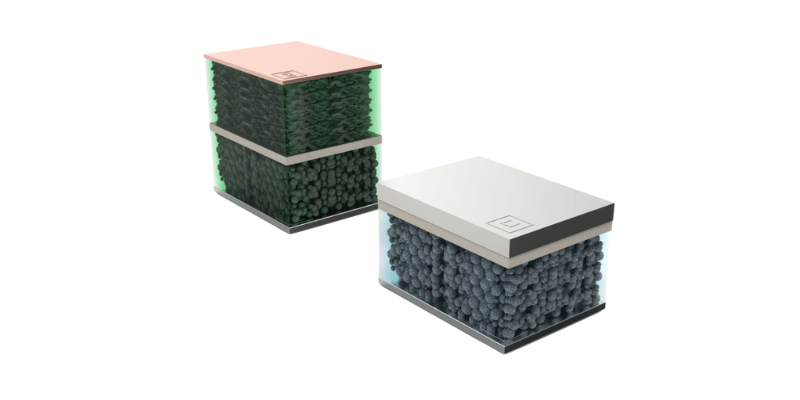
แบตเตอรี่ลิเธียมไอออนคืออะไร?
แบตเตอรี่ลิเธียมไอออน ใช้วัสดุคาร์บอนเช่นกราไฟท์สำหรับขั้วบวก ส่วนประกอบหลักของแบตเตอรี่เหล่านี้คือแคโทดขั้วบวกตัวแยกและ อิเล็กโทรไลต์- เมื่อชาร์จลิเธียมไอออนจะเดินทางจากแคโทดไปยังขั้วบวกผ่านอิเล็กโทรไลต์และอยู่ที่นั่น จากนั้นเมื่อคุณใช้อุปกรณ์ของคุณพวกเขาจะกลับไปที่แคโทดสร้างพลังงานไฟฟ้าเพื่อให้พลังงาน
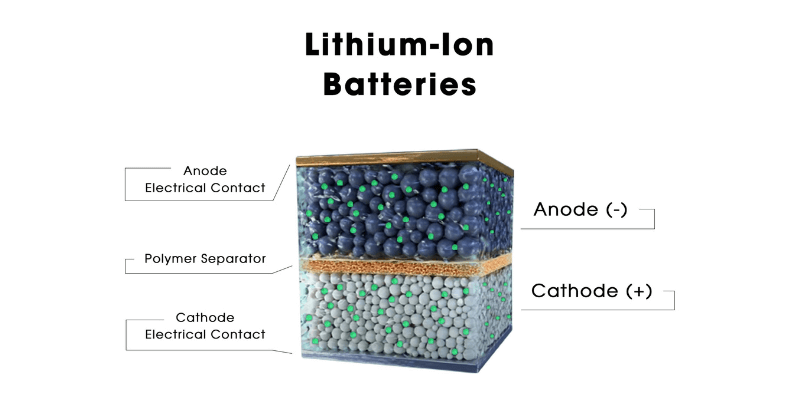
ข้อดีของแบตเตอรี่ลิเธียมไอออน
แบตเตอรี่ลิเธียมไอออนเป็นที่นิยมเนื่องจากข้อได้เปรียบที่น่าประทับใจ:
- ความหนาแน่นของพลังงานสูง: แบตเตอรี่ลิเธียมไอออนให้พลังงานที่สำคัญในพื้นที่ขนาดเล็กทำให้อุปกรณ์มีขนาดเล็กลงและเบาลงในขณะที่ยังคงอายุการใช้งานแบตเตอรี่ที่ยาวนาน
- ชาร์จไฟได้: ซึ่งแตกต่างจากแบตเตอรี่ที่ใช้แล้วทิ้งแบตเตอรี่ลิเธียมไอออนสามารถชาร์จซ้ำได้ซ้ำ ๆ ประหยัดเงินและลดของเสีย
- ไม่มีเอฟเฟกต์หน่วยความจำ: แตกต่างจากแบตเตอรี่รุ่นเก่าที่ต้องการการปล่อยอย่างสมบูรณ์ก่อนที่จะชาร์จใหม่หรือเสี่ยงต่อความสามารถในการสูญเสียแบตเตอรี่ลิเธียมไอออนสามารถชาร์จได้ตลอดเวลาโดยไม่ส่งผลกระทบต่ออายุการใช้งาน
- การปลดปล่อยตัวเองต่ำ: แบตเตอรี่เหล่านี้จะเสียค่าใช้จ่ายน้อยลงเมื่อเวลาผ่านไปเมื่อไม่ได้ใช้งานถือประจุอีกต่อไป
- แอพพลิเคชั่นที่หลากหลาย: แบตเตอรี่ลิเธียมไอออนมีความหลากหลายและใช้ในอุปกรณ์หลายเครื่องตั้งแต่สมาร์ทโฟนไปจนถึง รถยนต์ไฟฟ้า-
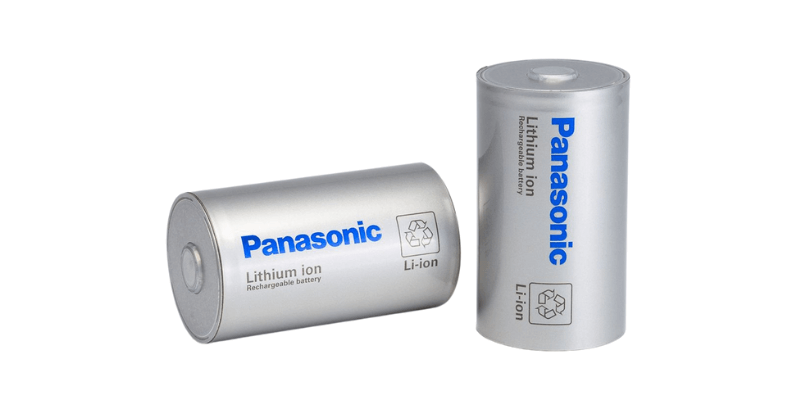
ข้อ จำกัด แบตเตอรี่ลิเธียมไอออน
แบตเตอรี่ลิเธียมไอออนมีการใช้กันอย่างแพร่หลาย แต่มีข้อ จำกัด :
- ราคา: แบตเตอรี่ลิเธียมไอออนมีราคาแพงกว่าแบตเตอรี่ชนิดเก่ากว่า ต้นทุนที่สูงขึ้นนี้อาจส่งผลกระทบต่อความสามารถในการจ่ายของอุปกรณ์ที่พึ่งพาได้
- อายุการใช้งานที่ จำกัด : ถึงแม้ว่าจะชาร์จได้ แต่ความสามารถในการถือครองประจุของพวกเขาจะลดลงเมื่อเวลาผ่านไปซึ่งต้องเปลี่ยนเนื่องจากการเปลี่ยนแปลงทางเคมีภายใน
- ความกังวลด้านความปลอดภัย: แบตเตอรี่ลิเธียมไอออนที่เสียหายหรือร้อนเกินไปอาจก่อให้เกิดความเสี่ยงจากไฟไหม้และนำไปสู่ “หนีความร้อน-” อาจทำให้เกิดไฟหรือระเบิด คำแนะนำของผู้ผลิตต่อไปนี้สำหรับการชาร์จและการจัดเก็บเป็นสิ่งสำคัญ
- ผลกระทบต่อสิ่งแวดล้อม: การขุดลิเธียมและวัสดุอื่น ๆ มีผลกระทบเชิงลบต่อสิ่งแวดล้อมและจำเป็นต้องมีการกำจัดที่เหมาะสมเพื่อป้องกันมลพิษ
- ความไวของอุณหภูมิ: อุณหภูมิสูงสามารถส่งผลกระทบต่อประสิทธิภาพและอายุการใช้งาน พวกเขาทำงานได้ดีที่สุดภายในช่วงอุณหภูมิที่เฉพาะเจาะจง
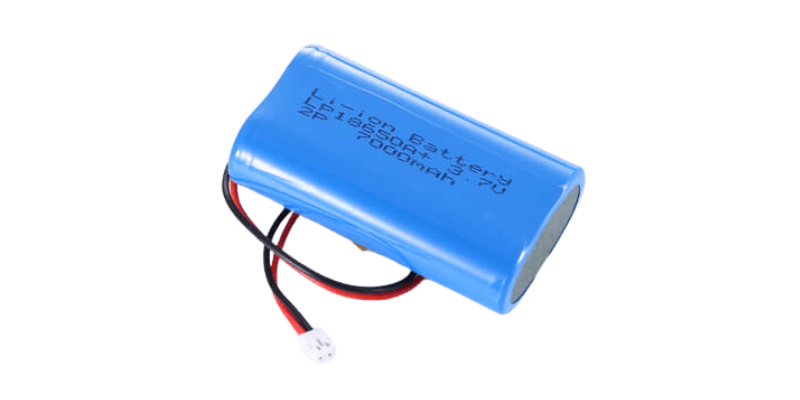
ความแตกต่างที่สำคัญระหว่างแบตเตอรี่ลิเธียมไอออนและแบตเตอรี่ลิเธียมโลหะ
นี่คือบทสรุปของความแตกต่างที่สำคัญระหว่างแบตเตอรี่ลิเธียม-โลหะและลิเธียมไอออน:
วัสดุขั้วบวก
- ลิเธียมไอออน: ใช้กราไฟท์เป็นขั้วบวก, ลิเธียมไอออน intercalating ภายในโครงสร้าง
- ลิเธียม-โลหะ: ใช้ลิเธียมเมทัลลิกบริสุทธิ์ช่วยให้มีความจุไอออนที่สูงขึ้น
ความหนาแน่นของพลังงาน
- ลิเธียมไอออน: ดี ความหนาแน่นของพลังงาน แต่ถูก จำกัด ด้วยความสามารถของขั้วบวกที่ใช้คาร์บอน
- ลิเธียม-โลหะ: ความหนาแน่นของพลังงานที่สูงขึ้นมากช่วยให้อุปกรณ์ที่ติดทนนานและช่วงรถยนต์ไฟฟ้าที่มากขึ้น
การชาร์จไฟอีกครั้ง
- ลิเธียมไอออน: ชาร์จไฟได้ช่วยให้ใช้ซ้ำได้
- ลิเธียม-โลหะ: ส่วนใหญ่ไม่สามารถชาร์จได้ แต่การวิจัยยังคงดำเนินต่อไปเพื่อให้สามารถชาร์จใหม่ได้
ความปลอดภัย
- ลิเธียมไอออน: โดยทั่วไปปลอดภัย แต่อาจมีความเสี่ยงจากไฟไหม้หากเสียหายหรือถูกนำไปใช้ในทางที่ผิด
- ลิเธียม-โลหะ: ความเสี่ยงด้านความปลอดภัยที่สูงขึ้นเนื่องจากการก่อตัวของ dendrite ที่อาจทำให้เกิดการลัดวงจรและไฟ
วงจรชีวิต
- ลิเธียมไอออน: ชีวิตวงจรที่ดียาวนานหลายร้อยหรือหลายพันค่าใช้จ่ายก่อนการย่อยสลาย
- ลิเธียม-โลหะ: อายุการใช้งานที่สั้นลงเนื่องจากความเสียหายที่ไม่สามารถย้อนกลับได้จาก dendrites ในระหว่างการชาร์จ/การปลดปล่อย
ความพร้อมในเชิงพาณิชย์
- ลิเธียมไอออน: เทคโนโลยีที่เป็นผู้ใหญ่มีให้บริการอย่างกว้างขวางในอุปกรณ์
- ลิเธียม-โลหะ: ส่วนใหญ่อยู่ในขั้นตอนการวิจัย; ความปลอดภัยและวงจรชีวิตท้าทายเป็นอุปสรรคต่อการค้า
ค่าใช้จ่าย:
- Lithion-ion: ลดต้นทุนการผลิตเนื่องจากเทคโนโลยีที่ครบกำหนด
- Lition-metal: แพงกว่าเนื่องจากความซับซ้อนในการผลิตและปริมาณที่ต่ำกว่า
บทสรุป
แบตเตอรี่ลิเธียมโลหะบรรจุพลังงานมากขึ้น แต่พวกเขาเผชิญกับปัญหาด้านความปลอดภัยและอายุการใช้งานเนื่องจากการก่อตัวของ dendrite ก่อนที่พวกเขาจะสามารถแทนที่แบตเตอรี่ลิเธียมไอออนความท้าทายเหล่านี้จะต้องได้รับการแก้ไข โชคดีที่นักวิจัยกำลังทำงานอย่างขยันขันแข็งเพื่อแก้ไขปัญหาเหล่านี้

